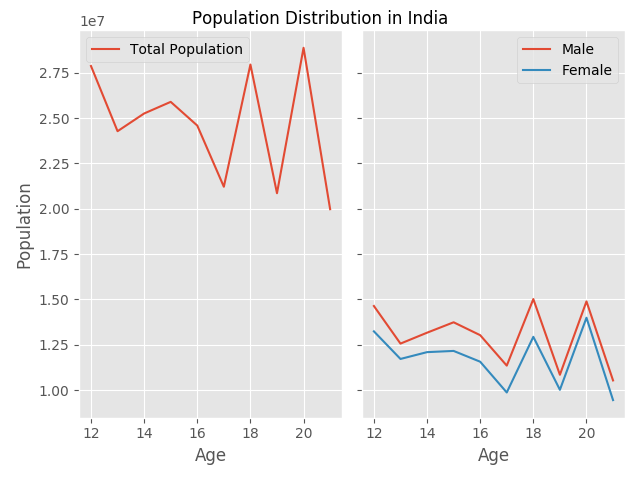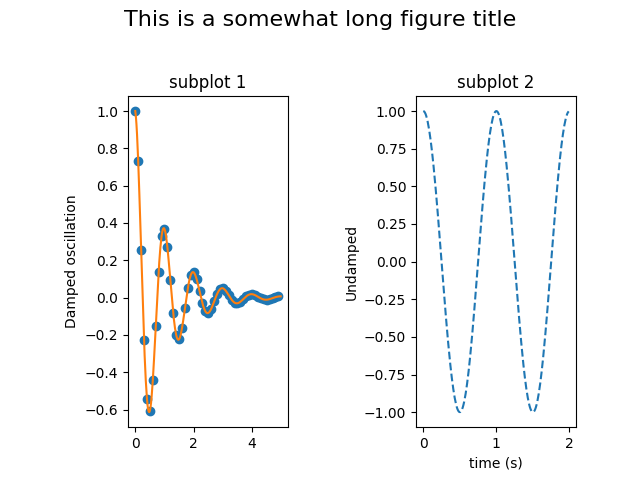

- Matplotlib subplot sizes how to#
- Matplotlib subplot sizes code#
- Matplotlib subplot sizes zip#
- Matplotlib subplot sizes download#
suptitle ( "Daily closing prices", fontsize = 18, y = 0.95 ) # loop through the length of tickers and keep track of index for n, ticker in enumerate ( tickers ): # add a new subplot iteratively ax = plt. This means that you only create an axis if there is data to fill it and you do not get unnecessary empty plots. Method 2: plt.subplot #Īn alternative approach is to create an axis object on the fly inside the loop, although you still need to specify the grid size (rows x cols) ahead of time. For example, if there are multiple empty plots that you don’t know ahead of time.

However, I find this a less satisfactory solution which could get complicated quickly. You could remove this empty plot after the fact by deleting it – for example using fig.delaxes(axes). This means if you have an odd number of inputs (as we have in our case), then you will have empty plots left over. Once we have run out of things to plot, we stop adding data to the subplots regardless of whether all the subplots have been used. This is because we have five tickers but we specified a 3x2 subplot grid (6 in total) so there is an unnecessary plot left over.Ī downside of the ravel() approach is that we specify and create the entire subplot grid first, and then add the plotting data to each plot in turn.

However, you will notice a slight issue - there is an annoying empty plot at the end. Great! So we can now plot each time-series on independent subplots. ravel ()): # filter df for ticker and plot on specified axes df = ticker ].
Matplotlib subplot sizes zip#
suptitle ( "Daily closing prices", fontsize = 18, y = 0.95 ) # loop through tickers and axes for ticker, ax in zip ( tickers, axs. subplots ( nrows = 3, ncols = 2, figsize = ( 15, 12 )) plt. Then we convert the table into long-form (one row for each datapoint) to demonstrate the plotting methods.
Matplotlib subplot sizes code#
The code below downloads the daily closing prices for Apple (AAPL), Microsoft (MSFT), Tesla (TSLA), Nvidia (NVDA), and Intel (INTC).
Matplotlib subplot sizes download#
(financial functions for Python) library it is very easy to download the data for a given list of stock tickers. Why stock prices? Because it is trendy for people to use (maybe I’ll get some good SEO?), but also using the ffn
Matplotlib subplot sizes how to#
How can you loop through a subplot grid? # Example dataset #īefore we can demonstrate the plotting methods, we need an example dataset.įor this analysis, we will use a dataset containing the daily closing stock prices of some popular tech stocks and demonstrate how to plot each time-series on a separate subplot.

In this post, I outline two different methods for plotting subplots in a single loop which I find myself using on a regular basis. While this gives you a lot of flexibility it can be overwhelming and difficult to understand the best way to do things, particularly when starting out or learning new functionality. One strength, but also arguably one of Matplotlib’s biggest weaknesses, is its flexibility which allows you to accomplish the same task in many different ways. So what can we do in this situation? We have a list of items we want to plot and we have a list of lists with our subplots, is there a way to conveniently plot our data in a single for loop? This is because, when creating the subplot grid using plt.subplots, you are returned list of lists containing the subplot objects, rather than a single list containing of subplot objects which you can iterate through in a single for loop (see below): However, when using Matplotlib’s plotting API it is not straightforward to just create a grid of subplots and directly iterate through them in conjunction with your list of plotting attributes. total order value by day) on a grid of individual subplots. a list of customer IDs) and sequentially plot their values (e.g. In an ideal world, you would like to be able to iterate this list of items (e.g. For example, when you have a list of attributes or cross-sections of the data which you want investigate further by plotting on separate plots. When carrying out exploratory data analysis (EDA), I repeatedly find myself Googling how to plot subplots in Matplotlib using a single for loop. other options for subplots using Pandas inbuilt methods and Seabornįor this post are available in this Github repository Problem Statement #.how to dynamically adjust the subplot grid layout.two different methods for populating Matplotlib subplots.Trouble getting to grips with the Matplotlib subplots API? This post will go through:


 0 kommentar(er)
0 kommentar(er)
